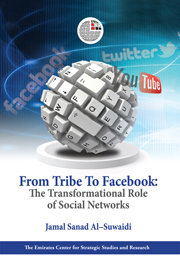Book contents
- Frontmatter
- Contents
- Acknowledgments
- Introduction
- Keywords
- Scope of the Study
- Previous Studies
- Social Networks: Concept and Role
- Statistical Indicators of Main Social Networks
- The Social Networking Age
- Data-entry Potential of Social Networks
- Impact of Social Networks
- Prospects for the Relationship between Traditional Media and Social Networks
- Legal Problems Associated with the Use of Social Networks
- Social Networks: Future Prospects
- Conclusion: Various Future Prospects
- Notes
- Bibliography
- Index
Data-entry Potential of Social Networks
Published online by Cambridge University Press: 05 September 2014
- Frontmatter
- Contents
- Acknowledgments
- Introduction
- Keywords
- Scope of the Study
- Previous Studies
- Social Networks: Concept and Role
- Statistical Indicators of Main Social Networks
- The Social Networking Age
- Data-entry Potential of Social Networks
- Impact of Social Networks
- Prospects for the Relationship between Traditional Media and Social Networks
- Legal Problems Associated with the Use of Social Networks
- Social Networks: Future Prospects
- Conclusion: Various Future Prospects
- Notes
- Bibliography
- Index
Summary
Over the last few decades there has been a subtle change in the way we interact with computers, which primarily use a keyboard and mouse as the two main input tools. There have been only a few exceptions to this situation, namely the introduction to the market of Apple's Touch Screen technology with the iPhone in 2007. Currently, however, myriad innovative ideas are appearing that could rapidly change the way we interact with electronic devices. Are we about to witness the end of the era of the keyboard and the mouse? When Microsoft recently announced the release of its Windows 8 operating software, it indicated that the future of computing will rest on interaction with our screens in a way that the keyboard and mouse would not be able to. Below is an overview of the main data-entry techniques currently being developed:
Motion Tracking
The most important characteristic of this technique is that it was designed to respond directly to human behavior rather than the requirement of learning a new skill. Both Sony and Microsoft have worked on developing this technique, which was introduced into the consumer market through gaming devices (including Sony's PlayStation and Microsoft's X-Box) in 2006. Microsoft achieved unparalleled success in marketing such a device when in 2011 it launched a toolkit for developing the “Kinect” motion detection device for Windows 7, allowing designers to develop the device to support innovative projects. A group of students at the Massachusetts Institute of Technology (MIT) designed JavaScript (JS), which allows the user to surf websites using mere gestures.
- Type
- Chapter
- Information
- From Tribe to FacebookThe Transformational Role of Social Media, pp. 45 - 50Publisher: Emirates Center for Strategic Studies and ResearchPrint publication year: 2013



